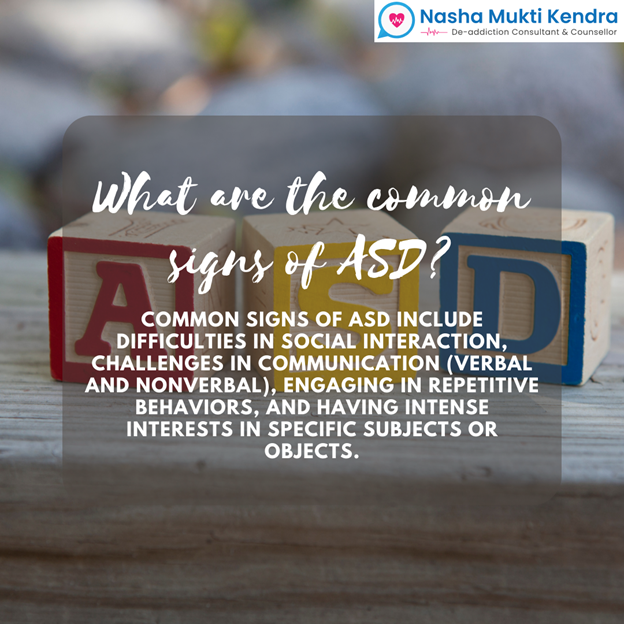Autism Spectrum Disorder (ASD) is a multifaceted neurological condition that manifests in a variety of ways. Understanding its signs and symptoms is paramount to fostering early recognition and appropriate intervention. This blog delves into the intricate landscape of ASD, shedding light on its diverse characteristics, with a focus on social communication and interaction skills, as well as the presence of restricted or repetitive behaviors and interests.
Decoding Social Communication and Interaction Skills
The hallmark of Autism Spectrum Disorder lies in the intricate web of challenges individuals face in the realm of social communication and interaction. These challenges, though varied, share common threads that can serve as indicators:
- Nonverbal Communication Deficits: One of the earliest signs often observed is difficulty deciphering nonverbal cues, such as facial expressions and body language. Individuals with ASD may struggle to grasp the nuances of these cues, leading to misinterpretations.
- Impaired Eye Contact: A distinctive feature of ASD is reduced or lack of eye contact. Eye contact is a cornerstone of human interaction, but for individuals with ASD, it can be overwhelming or uncomfortable, prompting them to avoid it.
- Social Reciprocity Difficulties: Establishing a reciprocal flow of conversation and interaction can be arduous for those with ASD. Initiating and sustaining conversations might be a struggle, as they might not pick up on conversational cues or take turns effectively.
- Empathy and Perspective-Taking Challenges: Understanding others’ emotions and viewpoints can be perplexing for individuals with ASD. They might find it challenging to grasp and appropriately respond to emotions, making social interactions intricate.
Navigating the Realm of Restricted and Repetitive Behaviors
Another layer of ASD is characterized by restricted or repetitive behaviors or interests, which provide a sense of familiarity and comfort to individuals, often acting as coping mechanisms:
- Repetitive Movements: Often referred to as “stimming,” repetitive movements like hand-flapping, rocking, or finger-tapping are common. These behaviors can offer sensory stimulation or serve as a means to regulate emotions.
- Rigid Routines: People with ASD often thrive on structured routines and predictability. A sudden change or deviation from their established routines can cause distress and anxiety.
- Intense Fixations: A defining feature of ASD is the intensity of interest in specific topics. Individuals might immerse themselves in niche subjects, acquiring vast knowledge and displaying unparalleled dedication.
- Sensory Sensitivities: Many individuals with ASD experience sensory sensitivities, often described as either heightened or diminished senses. They might be averse to certain textures, sounds, or lights, affecting their daily experiences.
Exploring the Complex Tapestry of ASD
Beyond the central characteristics, there are additional signs that warrant attention in the realm of Autism Spectrum Disorder:
- Delayed Speech and Language Development: Some children with ASD exhibit delayed speech and language skills, struggling with both verbal and nonverbal communication.
- Resistance to Change: A strong aversion to change is common among individuals with ASD. They often seek familiarity and predictability to mitigate anxiety and discomfort.
- Unconventional Play Patterns: Children with ASD might engage in play that differs from their peers. Their imaginative play could be unique, and they may gravitate towards solitary activities.
Unraveling the intricacies of Autism Spectrum Disorder is essential for early recognition and effective support. The intricate interplay of challenges in social communication and interaction skills, coupled with restricted or repetitive behaviors and interests, forms the bedrock of ASD. By recognizing these signs, we can foster a more inclusive society that acknowledges and accommodates the diverse spectrum of individuals affected by this condition.
How can Nasha Mukti Kendra help with ASD?
Nasha Mukti Kendra stands as a beacon of excellence in the realm of Autism Spectrum Disorder (ASD) rehabilitation. With an unwavering commitment to transforming lives, we have established ourselves as a leader by offering a unique American-based therapy known as Love & Care therapy. This innovative approach, tailored for every age group, forms the cornerstone of our success in treating ASD.
Love & Care Therapy: Elevating Lives
Our rehabilitation center takes immense pride in offering the groundbreaking Love & Care therapy, an American-based approach that has shown remarkable results in the treatment of Autism Spectrum Disorder. This specialized therapy is carefully designed to cater to individuals of all age groups, fostering a nurturing environment that promotes communication, social interaction, and emotional well-being.
Holistic Healing: Mind and Body
At Nasha Mukti Kendra, we believe in holistic healing that encompasses both the mind and body. Our expansive facility provides ample space for patients to engage in yoga sessions and various physical activities. We understand the significance of physical well-being in the journey towards overcoming the challenges posed by ASD. Through these activities, individuals are empowered to enhance their physical fitness and develop self-confidence, complementing the comprehensive therapy we provide.
In conclusion, Nasha Mukti Kendra has emerged as a trailblazer in the field of Autism Spectrum Disorder rehabilitation. With our pioneering Love & Care therapy and a dedicated space for yoga and physical activities, we are committed to fostering holistic healing that empowers individuals to embrace their full potential and lead fulfilling lives.
